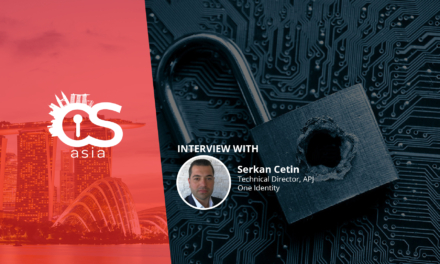The digital and physical worlds are merging in business, work and life – all the more reason we should pay more attention to digital resilience
At the cusp of the metaverse, we can hardly untangle ourselves and our businesses from our digital presence.
In a world where communication, collaboration, transaction and social interaction cross the boundaries of both the physical and digital worlds, shouldn’t we be more concerned with how strong and robust our digital infrastructures are, especially with all the recent news about digital disruptions, breaches and outages?
A recent study from Splunk found that investing in digital resilience is paying off for organizations around the world and across industries in Asia.
CybersecAsia discussed some of the regional findings from Splunk’s recent Digital Resilience report with Raen Lim, Group Vice President, Asia, Splunk.
Based on Splunk’s latest Digital Resilience report, in what ways has digital resilience paid off for organizations?
Raen Lim: We have seen how digital resilience gives companies tremendous return on investment. Our report shows organizations can be classified into four categories based on their level of resilience to service disruptions or outages – namely, Beginning, Developing, Intermediate, and the highest level Advanced.
Advanced organizations with resilient digital ecosystems are able to withstand, and even thrive amid economic headwinds and geopolitical instability. We have found that they can save US$48 million each year on average, because their higher levels of digital resilience translates to lower periods of downtime. They also consistently react faster compared to others when faced with service disruptions.
Advanced digital resilience capabilities give these companies a decidedly strong foundation of security, enabling their efforts to be focused on other priorities such as growth and innovation – meaning more time gets spent on efficient delivery of products and services, as well as focused efforts to turn disruption into opportunities for innovation.
What are some trends in digital resilience you’ve observed among organizations in Asia?
Digital resilience varies greatly in companies across Asia.
For example, we found that organizations in India experience more unplanned downtime (342 hours per year) compared to the global average (238 hours per year). This could be due to insufficient accountability within the market, and bureaucratic processes that frustrate rather than assist rectification of any unplanned downtime. Weaker institutional monitoring of back-end services also clouds early detection and potential remediation of service disruptions.
Yet our respondents from India also reported that they feel fully prepared to adapt to disruption from a recession (66%) or from competitors (69%), compared to their global peers (52% and 50% respectively). We can attribute this to the country’s strong talent pool of engineers and IT professionals, which contributes to a solid institutional experience in reactivity.
The often-breakneck pace of complex global projects requires skilled, agile personnel’s, and with an established talent infrastructure, the organizations in these countries are capable of embracing disruptions and change.

On the other hand, despite its status of seeing the lowest amount of unplanned downtime at 188 hours per year (versus the global average of 238 hours), Singapore experiences exceptionally high downtime costs (US$634,680 per hour versus a global average of US$365,040 per hour).
This juxtaposition is likely due to Singapore’s significant investments in equipping its workforce with strong IT skills through tech upskilling initiatives like SkillsFuture, but the country’s high labor cost and comparatively lower-valued Singapore dollar have contributed to the higher-than-average cost of downtime.
Which countries in this region are most prepared for disruption, and what are the likely factors driving such resilience?
Raen Lim: On average, countries more prepared for disruption in this region include the likes of India, Australia and New Zealand (ANZ). This could be due to two factors – government regulations and a skilled tech workforce.
ANZ has strict security legislation and data governance and compliance standards. This in turn requires companies operating in these countries to comply and be stringent in their overall security posture and data management across hybrid environments.
Another factor driving such resilience may also be due to a strong backbone of tech talent in these countries with established centers of excellence and development centers that encourage collaboration and innovation over siloed efforts and being reactive.
Which industries in the region are ahead in digital resilience, and which are lagging?
Raen Lim: In our research, we learnt that the retail and financial service industry have led the charge in digital resiliency and have reported the highest levels of digital transformation success. On the other hand, globally, the Public Sector and Telecommunications industries have been the slowest in achieving digital transformation success.
Historically, the PubSec and Telecom industries have been held back by their dependence on cumbersome legacy technology environments, alongside a lack of broader investment in digital resilience. However, while it seems daunting, building digital resilience capabilities can be fuss-free.
Take for example the case of Globe Telecom (Globe), the largest telecommunications company in the Philippines. While the industry traditionally struggles with legacy infrastructure, firmware and an unwieldy security posture, Globe was able to capably harness Splunk’s cloud-based IT Service Intelligence platform towards improving whole-of-network visibility.
With twenty monitors cut down to just one customized, centralized dashboard, the telecom giant was able to gain complete visibility into their security posture, improve anomaly detection and switch from reactive to proactive problem-solving. By centralizing operational health, Globe uses 80% less time to detect incidents and 40% fewer system-monitoring resources needed for their round-the-clock IT operations.
Globe’s proactive approach towards acting upon data insights embraced digital resilience as the basis of business resilience.
How should organizations level up to become more digitally resilient?
Raen Lim: Most organizations are already at some stage of building digital resilience. What’s harder is to move away from traditional mindsets of resilience as a matter of compliance and part of disaster recovery. For a while, digital systems have been taken for granted despite their increasing criticality. We have witnessed how digitalization has been instrumental in achieving growth and any potential strain on digital systems can be catastrophic across an organization.
Hence, the basis of any kind of business “resilience” must be digital resiliency. Such a transition must mean that digital resiliency transitions into a whole-of-organization strategic objective, distributed across all key functions of an organization.

One way organizations could level up would be to invest in automation. Such efforts are key, considering that it allows organizations to maximize their resources, allowing for its human resources to be diverted towards other avenues of growth. Integrating automation into an organization’s operations could take the form of embracing auto-remediating systems that restore themselves if they run into issues, or automating security playbooks.
For example, the use of machine-learning within their threat detection approaches enables Security teams to automate the process of filtering out false positives, and detect patterns of suspicious activity efficiently and accurately.
Another way for organizations to become more digitally resilient is to build a culture of collaboration across disparate tech teams. Empowering teams with unified solutions is often key in facilitating digital transformation across the whole organization, and is especially beneficial in times of disruption. In fact, Splunk’s research found that where security and IT teams support initiatives to accelerate the release cycle across all products and services, these companies are twice as likely to have digital transformation success, compared to siloed efforts.
We have helped numerous organizations across Asia build their digital capabilities and have seen how that can help weather disruptions – and be a source of tremendous growth, if harnessed appropriately.

















